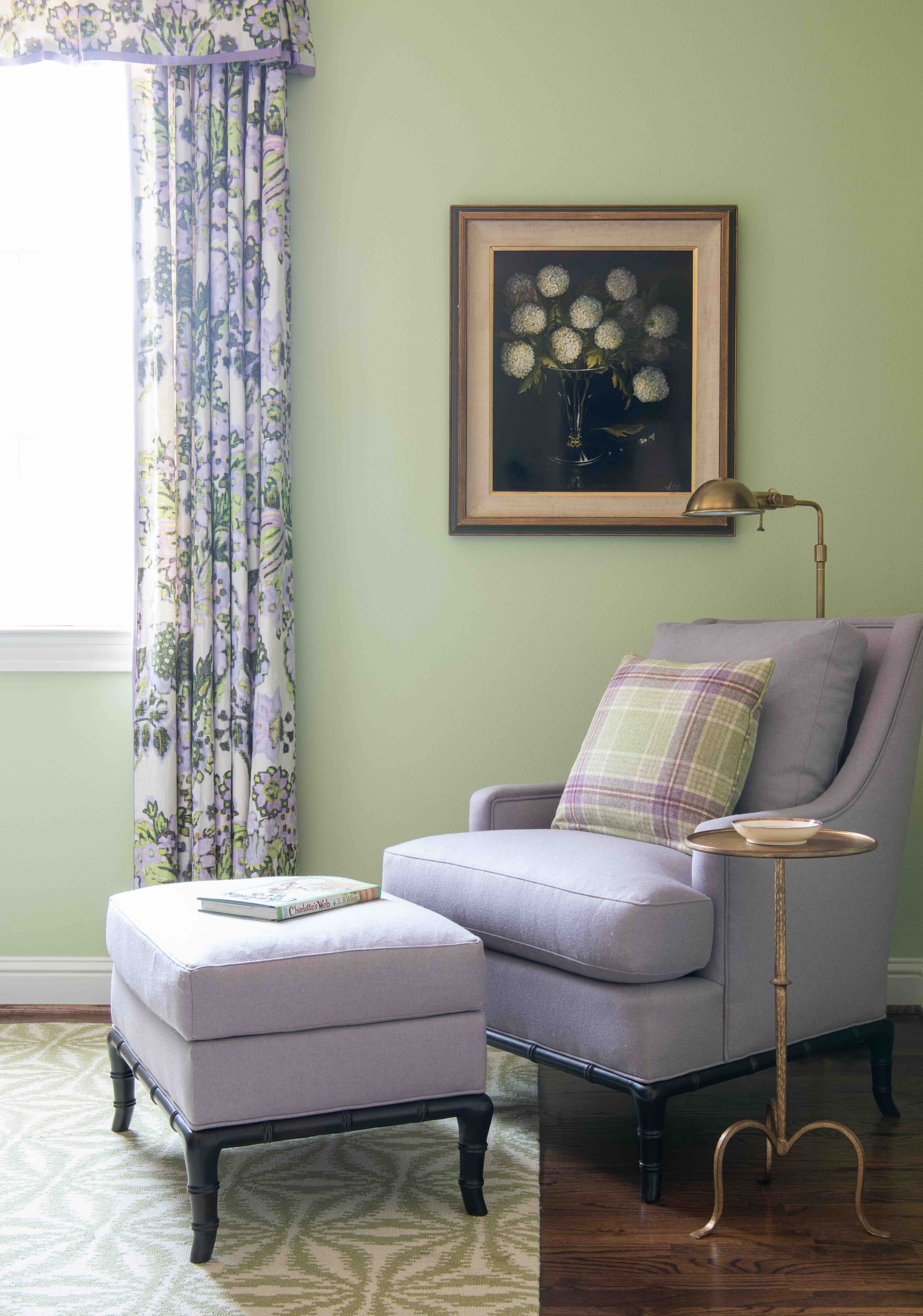Seen here is a charming vignette from a Hill Country style second home we designed in Prosper, Texas.
If you’re like many Dallas urbanites, you’ve always dreamed of having another place to escape to, such as a mountain cabin, lake house, or beach house. However, designing one home is already a big project. It’s no wonder that many people would feel weary just thinking about styling and furnishing a second home.
There are certain things that I think people should keep in mind before they design their first vacation house. Regardless of whether or not you already own a vacation property, or are making plans to buy one, these designer tips should help you get started.
1. Choose the Appropriate Design Style for Your Location
This guest bedroom and bathroom in a Dallas home have a nautical theme to give guests that "getaway" experience.
Now is the time to create a look that’s entirely different from your city home. To start with, I think a second home should reflect the area it is in. Farmhouses and mountain homes tend to be rustic, while coastal homes are usually more casual. For example, a mountain home could have photographs of local scenery or wildlife on the walls. If your second home is by the shore, you’ll definitely want nautical accessories, like seashells or nautical paintings. A lake home should almost always be decorated in light and cool colors, such as blues, whites, and aquas.
2. Make Sure to Create an Oasis
Your vacation home should be a place that you want to escape to. No matter the budget, there needs to be at least some touches of luxury in the home to give you that “resort” feel. It’s up to you where you want to splurge—in unique accessories, luxurious fabrics or in natural materials, to give some examples. One way to make your bed feel more inviting is to choose an extra tall or extra wide headboard. Your bathroom should also be bright and well-lit to create a spa-like atmosphere.
While some accessories are necessary to give the home personality and charm, remember that clutter also creates more stress (and all of those pieces will need to be dusted, too). I wouldn’t include anything that is too delicate or precious in a vacation home. This is especially true if small children or pets will be spending time at the house, in which case you should choose a durable flooring, like polyurethane-coated hardwood or tile, instead of carpeting.
Instead of delegating worn out bedding sets to your second home, make quality bedding one of your budget priorities.
3. Keep Things Interesting with Texture
Vacation homes are usually in a beautiful natural setting, so you’ll want to ‘bring the outdoors in’ by using natural materials. If you look at professionally designed vacation homes, you’ll see a lot of wood furnishings. Some other natural materials you can think about including are slate floor tiles and natural fiber rugs. Don’t forget to combine your rough textures with soft fabrics, like those made of sheepskin, wool, or linen. Since you won’t be using your vacation home year-round, you probably don’t want to buy live plants. Instead, add some greenery with realistic-looking faux plants.
Since this vacation home is a farmhouse, we made sure to include lots of natural materials, especially wood.
4. Plan Ahead for Your Guests
Most people who own a second home intend to let their friends or relatives use it too. If you do plan on entertaining, make sure that your living and dining areas will have enough seating space. A round table makes it easier to squeeze in additional chairs if needed. A vacation home table should also have plenty of space to play games or work on puzzles. Consider adding bar seating to your kitchen island so that guests can visit and chat with you while you cook. If you’re loaning out the home to people you don’t know very well, have an area where you lock up and store your own personal belongings.
As you can imagine, there are certain design styles that are better suited than others for vacation homes. Depending on where your second home is located, the list of fitting styles gets even narrower. Knowing more about these styles will make it much easier for you to envision and design your dream home.
The striped green curtains in this girl's room bring the colors of the outdoors in.
If you don’t have the time or energy to do it yourself, that’s where an interior designer such as myself could come in. My firm has a lot of experience with vacation homes, and I personally enjoy finding ways to bring local color and regional accessories into them. You can reach out to us by sending an email to info@chambersinteriors.com or calling us at 214-651-7665.
RELATED ARTICLES:










